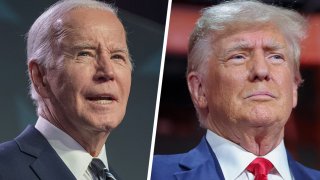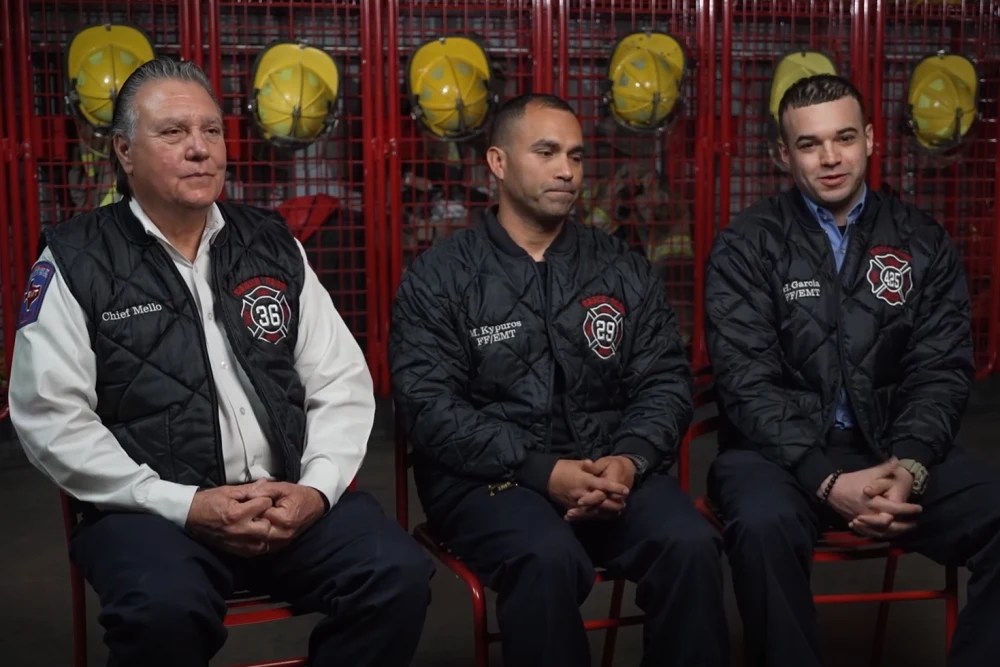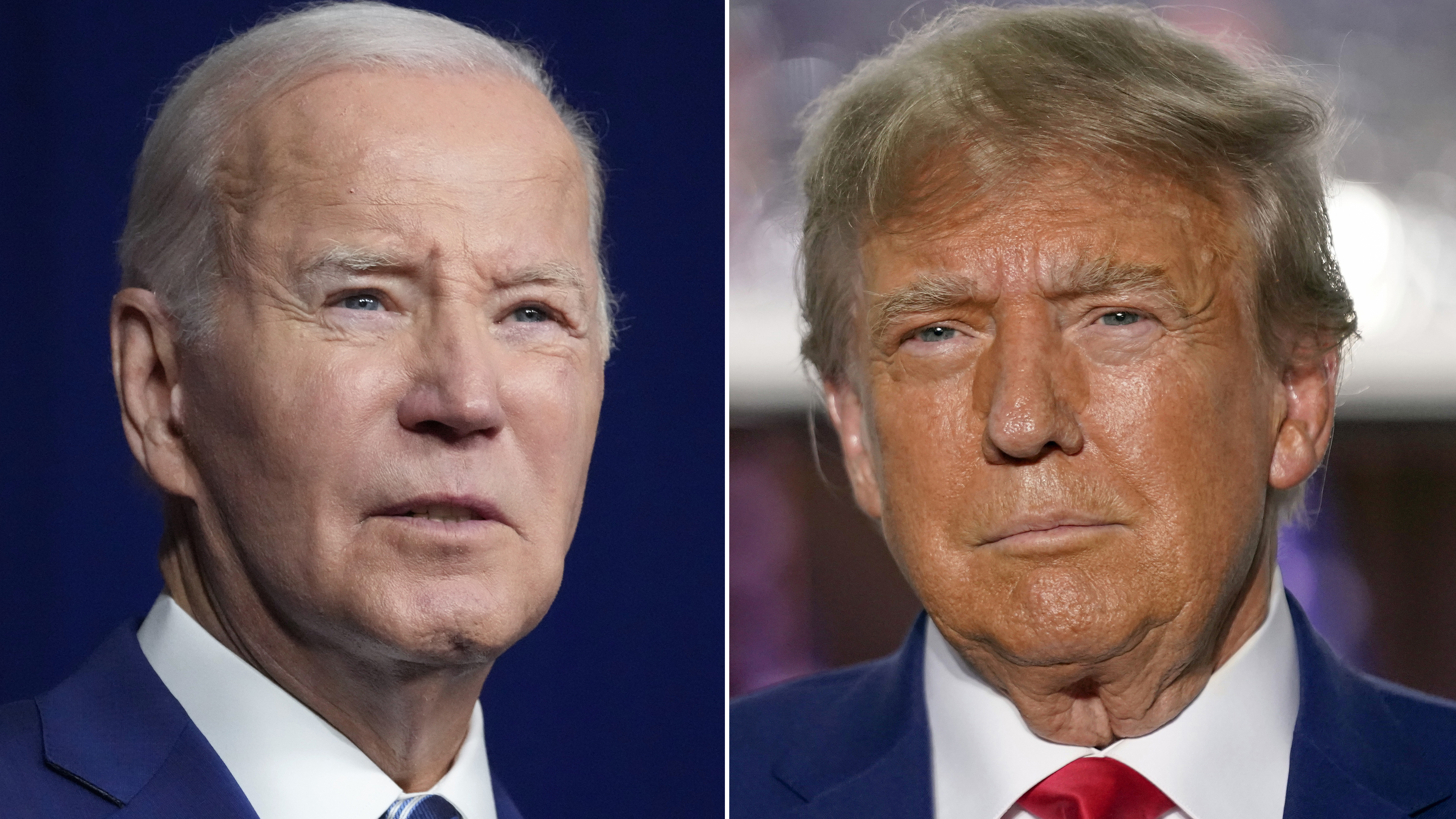
On the banks of the same Rio Grande but 300 miles apart, President Joe Biden and GOP challenger Donald Trump on Thursday surveyed the U.S.-Mexico border and tussled from a distance over who is to blame for the nation's broken immigration system and how to fix it.
Immigration has emerged as a central issue in the 2024 presidential campaign, which is widely expected to be a Biden-Trump rematch, and each man is seeking to use the border problems to his own political advantage.
Their itineraries were remarkably similar: They arrived in Texas within a half-hour of one another. Each chose an optimal location from which to make his point, got a briefing on operations and issues, walked along the scrub brush by the Rio Grande and spoke directly to the public. Their remarks even overlapped in time for a bit.
But that's where the parallels ended.
Get DFW local news, weather forecasts and entertainment stories to your inbox. Sign up for NBC DFW newsletters.
Biden sought to spotlight the necessity of a bipartisan border security bill that was tanked by Republicans on Trump’s orders, and flat-out asked the Republican frontrunner to join him in supporting a congressional push for more funding and tighter restrictions.
“Here’s what I would say to Mr. Trump,” Biden said. “Instead of playing politics with the issue, join me, or I’ll join you in telling the Congress to pass this bill. You know and I know it’s the toughest, most efficient, most effective border security bill this country’s ever seen."
Biden went to the Rio Grande Valley city of Brownsville, which for nine years was the busiest corridor for illegal crossings. The numbers have dropped in recent months, which officials credited in part to Mexico for stepping up its own border security. The visit was a nod to how the Biden administration views migration: as a regional and global issue, not just a U.S. problem.
The president walked along the Rio Grande and received a lengthy briefing from Homeland Security officials, who spoke bluntly about what they needed to do their jobs effectively — in short, more money to hire more officers along the border and for use across the asylum process to help clear out massive backlogs.
“I want the American people to know what we’re trying to get done,” Biden said. “We can’t afford not to do this.”
Trump simply blamed Biden.
He traveled to Eagle Pass, roughly 325 miles northwest of Brownsville, in the corridor that’s currently seeing the largest number of migrant crossings. He met with Republican Gov. Greg Abbott and Texas National Guard soldiers who have commandeered a local park and put up razor wire fencing at the river's edge to keep migrants from crossing illegally. The park has become a Republican symbol of defiance against the federal government.
“This is like a war,” Trump said.
Gazing out over the river, Trump raised his fist and waved and shouted to people on the Mexico side, who waved back. Then, he declared that migrants arriving to the border were criminals and some were terrorists, a dialed-up version of the accusations he often used during the 2016 campaign. This time, he's started to harness rhetoric once used by Adolf Hitler to argue migrants are poisoning the blood of America.
“They’re being let into our country and it’s horrible," Trump said. "It’s horrible.”
Trump also brought up the killing of a 22-year-old nursing student in Georgia recently. The suspect is a Venezuelan migrant.
“Crooked Joe has the blood of countless innocent victims," Trump said. "It’s so many stories to tell, so many horrible stories.”
Despite Trump's claims, many studies have found immigrants are less drawn to violent crime than native-born citizens. One published by the National Academy of Sciences, based on Texas Department of Public Safety data from 2012 to 2018, reported native-born U.S. residents were more than twice as likely to be arrested for violent crimes as people in the country illegally.
As the politicians traded barbs over who was to blame, migrants were still making the dangerous journey into the U.S. Trump stood on a concrete boat launch where a day earlier, a man had been pulled from the river, drowned, trying to cross. In Brownsville where Biden spoke, a group of migrants had crossed illegally overnight.
Across the border from Brownsville, in Matamoros, makeshift shelters dotted the ground for migrants who hope to come to the U.S.
“I come completely alone on this journey, I have been on this journey for about six months and the only important thing I have in my life are my mom, my little sister and nobody else," Joseph Elián Gutierrez Castillo, a Nicaraguan migrant, said in Spanish. “With God’s favor everything will go well.”
The number of people who are illegally crossing the U.S. border has been rising for years, for reasons that include climate change, war and unrest in other nations, the economy, and cartels that see migration as a cash cow.
Migrants can ask for asylum whether they come illegally or through ports of entry; in some cases they are turned away because of current policies, but many families are allowed into the U.S., where they often wait years for a court date to determine whether they can stay.
The administration’s approach has been to pair crackdowns at the border with increasing legal pathways for migrants designed to steer people into arriving by plane with sponsors, not illegally on foot to the border. The numbers of migrants flowing across the U.S-Mexico border have far outpaced the capacity of an immigration system that has not been substantially updated in decades.
Arrests for illegal crossings fell by half in January, but there were record highs in December.
Since the president was last at the border a year ago, the debate over immigration in Washington has shifted further to the right, with Democrats increasingly eager to embrace border restrictions now that migrants are sleeping in police stations and airplane hangars in major U.S. cities.
During bipartisan talks on the deal that would have toughened access for migrants and funded enforcement and immigration court, Biden himself said he’d be willing to “shut down the border” right now, should the deal pass.
The talks looked promising for a while. But Trump, who didn’t want to give Biden a political win on one of his signature campaign issues, convinced Republicans to kill the deal. House Speaker Mike Johnson, R-La., declared the deal dead on arrival.
Republicans claim Biden has the power he needs to fix the issue, but absent legislative action, any major policy changes are likely to be challenged or held up in court. Under Trump, too, new hardline policies were often held up in court.
Among voters, worries about the nation’s broken immigration system are rising on both sides of the political divide, which could be especially problematic for Biden.
According to an AP-NORC poll in January, the share of voters concerned about immigration rose to 35% from 27% last year. Fifty-five percent of Republicans say the government needs to focus on immigration in 2024, while 22% of Democrats listed immigration as a priority. That’s up from 45% and 14%, respectively, from December 2022.
Trump has laid out updated immigration proposals that would mark a dramatic escalation of the approach he used in office and that drew alarms from civil rights activists and numerous court challenges.
Some of those include reviving and expanding a travel ban, imposing “ideological screening” for migrants, terminating all work permits and cutting off funding for shelter and transportation for people who are in the country illegally.



